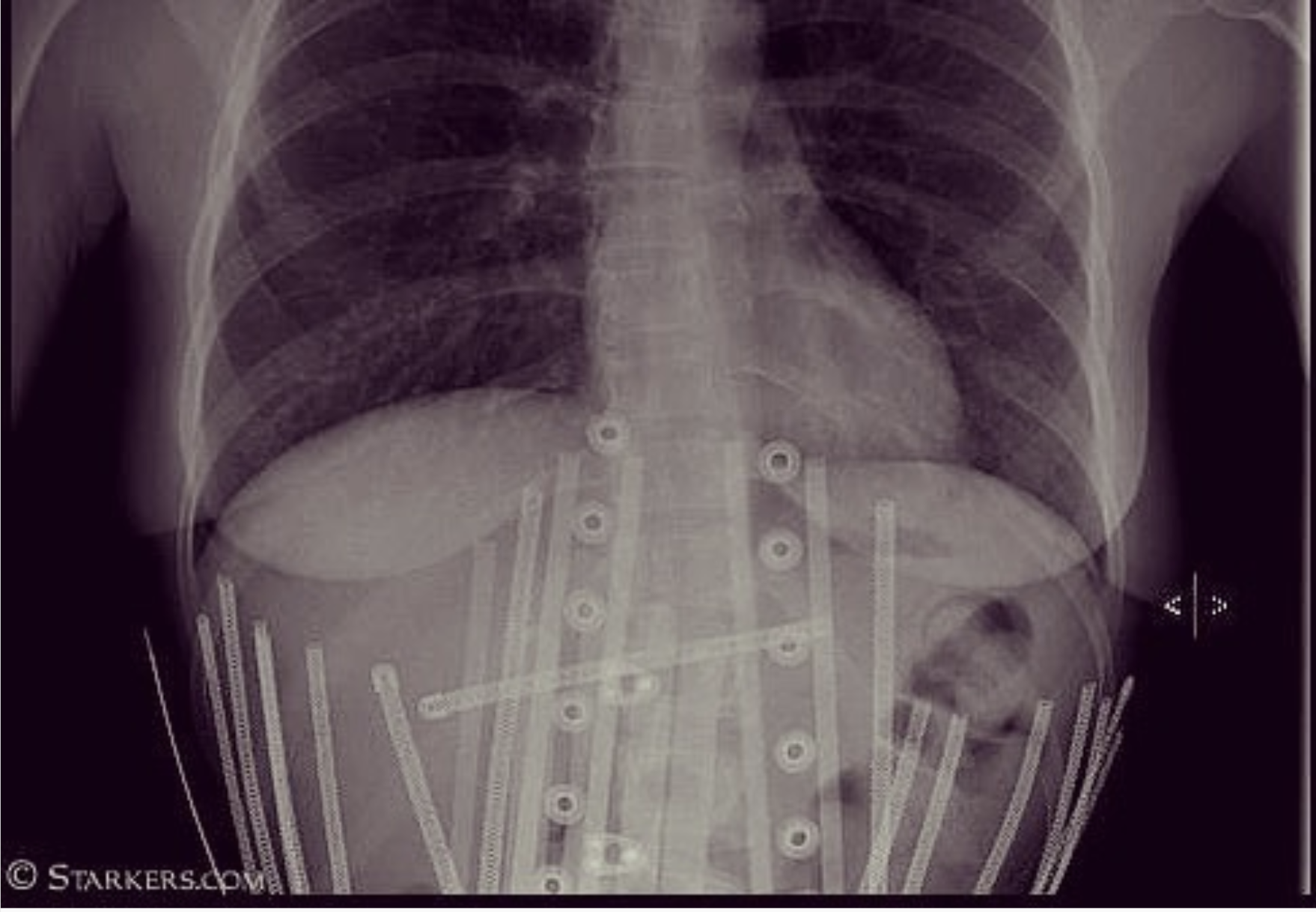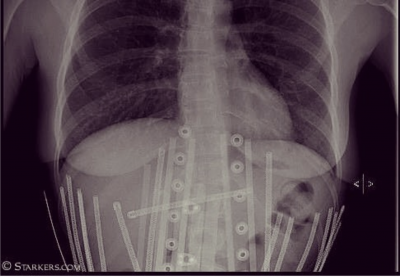Today, I posted this picture on my Instagram, because the leaves on the ground and Halloween just around the corner reminded me that it was 6 years ago today that I was recovering from a microdiscectomy and laminotomy surgery. I wore a corset to help take the pressure off of my disc, and alleviate the horrible nerve pain which resulted from the disc compression. My corsets helped me so much during the injury, that I couldn’t even take it off for the pre-surgery X-ray! I don’t recommend wearing corsets into an X-Ray, but I really had no choice, the nerve pain was too severe at that time to remove the corset, it was the only thing keeping me upright. This picture also reveals my scoliosis and how the herniated disc caused my already curved spine to curve even more. I wanted to share with you a little about my experiences as someone who has scoliosis and wears corsets, has worn corsets to help with a back injury, and also as someone who makes corsets for people who have scoliosis and back injuries.
Also, a Medical Disclaimer. … The Content is not intended to be a substitute for professional medical advice, diagnosis, or treatment. Always seek the advice of your physician or other qualified health provider with any questions you may have regarding a medical condition.
Scoliosis
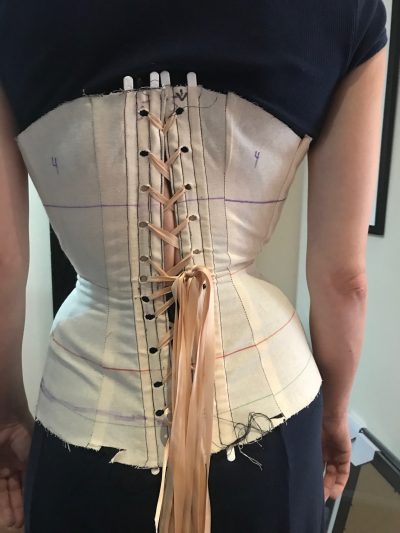
Scoliosis is a condition where a person has a spinal curve in an S or C shape, with an angle that creates an asymmetry in the torso. represented in either or both a lateral, or axial rotation. The degrees of asymmetry can vary, as well as the level of discomfort it can cause. Fortunately for me, my scoliosis doesn’t cause pain, but can become problematic when I overdo the weightlifting. Some people can have a daily struggle with their scoliosis pain. A hip can be higher, the ribs could be rotated, the back could sway out, or all of the above.
Some people who have pain caused by their scoliosis find that their pain can be eased with corset wearing. I strongly recommend that people consult with their health care team before investing in a corset for purposes of pain relief, or spinal support so they can be sure it won’t cause more trouble than it solves. I also strongly recommend that you seek out an experienced corsetmaker, like me, who drafts patterns from scratch, and does fittings to ensure your comfort and proper support and fit. An off the rack or ready to wear corset won’t do if both sides are identical, and you try to fit it onto an asymmetrical body. It will pinch and press uncomfortably on hips and ribs, and cause a whole different kind of pain.
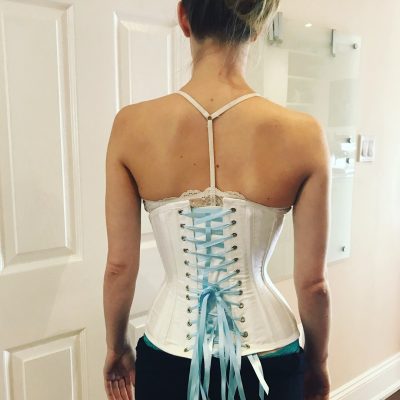
A properly fitting corset for someone with scoliosis doesn’t need to look like something from an army surplus store. I have made many beautifully detailed silk, brocade, leather, and mesh corsets for clients with scoliosis, that have been as beautiful as they are supportive. Why compromise on a support garments’ appearance for the sake of support, you can have it all! Not only that, but in some cases, may even be covered under insurance. Check with your doctors and insurance provider, and us for more information about this.
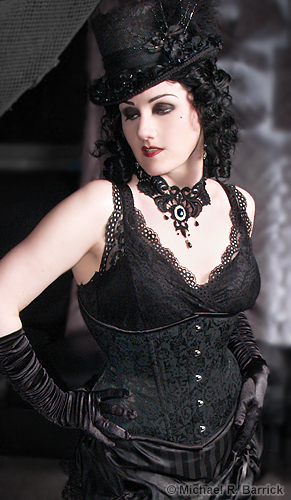
The corsets that I have made for myself have always been made asymmetrically to accommodate my scoliosis. The scoliosis itself doesn’t cause me any pain on it’s own, but many of my clients do suffer from painful effects of their scoliosis, being either tight QL muscles, disc issues, or just general sore muscles. A corset can take the pressure off of the low back, by supporting the upper torso, and immobilizing rotation of the spine, which can often be the culprit of scoliosis pain.
It’s important to note, that even a custom made to measure corset is not the same as a corrective scoliosis brace, nor it it any sort of corrective orthopaedic device, and it can not be substituted for one, if that is what your health care team has recommended for you. A corset is a supportive, properly fitted brace, that can, in some cases help a great deal with back pain from scoliosis, but it is not designed to correct scoliosis or injury.
Back Injury
Back injuries can be caused by any number of reasons, whether it be an acute injury, where something traumatic, like a car accident occurred, or chronic, where it is an ongoing, or degenerative issue. It can be in the bones, in the muscles, in the fascia, or something pressing on a nerve. Corset wearing definitely shouldn’t be done, unless you have consulted your health care team, and determine that wearing a compressive garment could ease the pain, and the limited mobility would benefit you. If worn in the wrong circumstances, it could make the injury and pain much worse. Please find out the cause and have a path to treatment worked out with your team before considering a brace/corset. On many occasions, I have had health care professionals reach out to me to make a corset/brace for their patient to help with their particular back pain, some for daytime use, and some to help immobilize their patient while they slept to prevent sudden movement that can cause pain at night, so they can sleep better. Working in conjunction with a health care professional, I am able to make a corset/brace that is uniquely tailored to their patients body and needs. Having first hand experience with the kind of pain angry spinal nerves can cause, I’m highly motivated to make their patient feel better as quickly as possible.
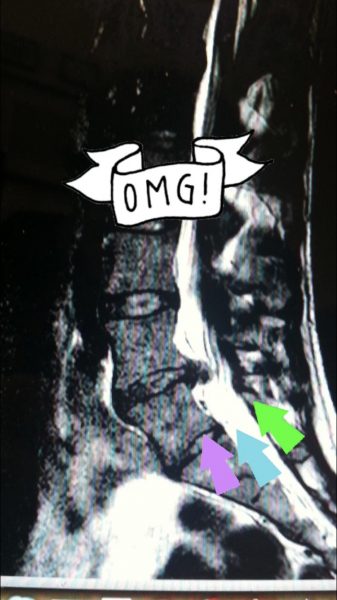
Nobody was able to tell me what exactly caused my disc to herniate from my L4/L5 vertebrae, but after training for months for a Tough Mudder race, I woke up one morning to the feeling of searing pain washing over my right leg. It was like no pain I had ever experienced, and even though I have given birth twice with not so much as a Tylenol (one baby was 10 lbs!), nothing even came close to the pain I had felt in my back and leg that day. The pain continued, and I saw three physiotherapists, my chiropractor, my osteopath and doctors, and nobody could help, until an MRI revealed that my disc had herniated so spectacularly, that it compressed my spinal nerves.
I wrote about the whole ordeal of my scoliosis turned injury, and surgery, and how my corset supported me through it. This is an excerpt from Lucy’s Corsetry’s book Solaced: 101 Uplifting Narratives About Corsets, Well-Being, and Hope, that I contributed. Please check out her Kindle book to read more amazing stories from corset wearers and corsetieres about their personal experiences!
(go buy her book, there are so many more stories like mine, and so many positive stories about how corset wearing has positively impacted their lives!)
My story: Dianna DiNoble
“My daughter was born in 2004 and she needed to be held constantly for the better part of her first year. I would shift between being hunched over, jutting one hip or another out to bear her weight, leaning forward with a front carrier, or putting her in a back carrier to walk or sit at a sewing machine. My back and abdominal muscles were constantly sore.
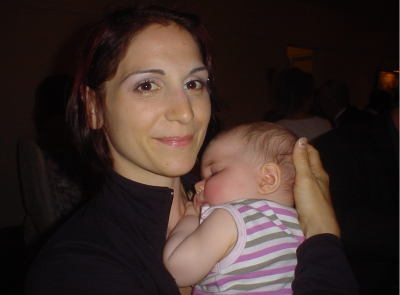
The first time I went out to an event where I could dress up after the birth of my daughter, I wore one of my own custom-made, custom-fit corsets. I felt instant relief and support when I laced up. It gently compressed my sore muscles, held my spine and ribs stable, almost massaging them as I walked and moved. At the end of the evening, when I removed my corset, the decompression was every bit as wonderful as the initial compression. My back muscles felt more relaxed than they had been in months. Wearing the corset soon improved all aspects of my daily life; it supported and reinforced proper posture when I was unable to do so on my own.
I actually felt a little ridiculous about how long it took me to think of using a corset for posture support, since I was (and am!) surrounded by corsets all day long. Soon enough I found that wearing a corset during the day also helped to reinforce my posture while carrying my daughter or bolts of fabric – or both at the same time. The slouching while picking up an ever-increasing (and often squirming) weight that was leading to sore muscles lessened, my posture improved overall.
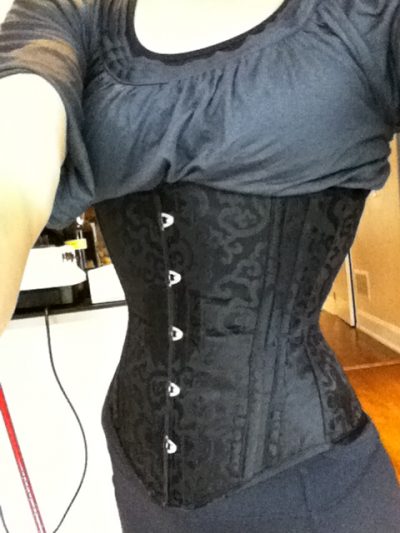
It wasn’t just heavy lifting causing me problems. When I was about 12-years old, I was diagnosed with mild scoliosis. It wasn’t terribly noticeable and fortunately didn’t produce the resulting muscle and joint pain that many people that I know suffer from. However, it did cause some muscles to move incorrectly when I exercised (which I love to do), which possibly led to a terribly herniated lumbar disc at L4 vertebrae in 2012.
It all began with a severe sharp pain in my low back with radiating sciatic pain shooting down my right leg. I saw several healthcare professionals, including a chiropractor who was only able to use acupuncture and traction to relieve the pain, since an adjustment could have injured my back further. We discussed the mechanism of traction, and how it was similar to a (properly custom-drafted and constructed) corset in the way that it held the ribs, spine, and hips relatively still, and prevented the vertebrae from compressing downward. He recommended that I may find it helpful to wear one of my corsets as a method of walking traction. When I tried this method I certainly did feel relief from some of the pain. My corset prevented me from making movements that would send sudden jolts of pain down my sciatic nerve, and the compression and mild traction provided relief from the vertebrae compressing my disc. It also served useful to hold ice and heat packs to the low back when I loosened the corset a little.
As the weeks wore on my doctor assured me that the disc would heal on its own; it didn’t. The pain increased and a series of MRIs showed that the disc herniation was actually getting worse. Eventually I was fully dependent on my corset being laced as tightly as it would go all day, keeping the torso immobile and compressed. I also needed it to sleep. Sleeping in a corset was tricky, even lightly tightened, it can limit full, deep breaths. While I wouldn’t recommend it, it was the only way for me to get an hour or two of sleep at night.
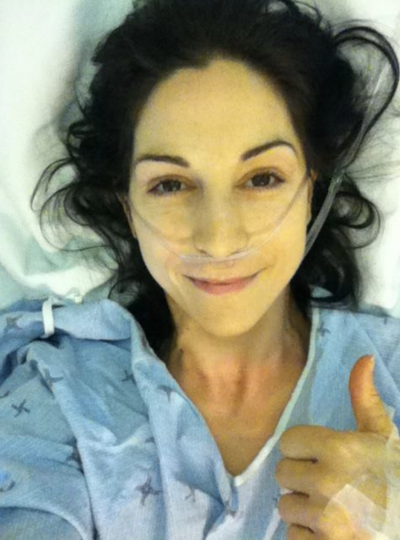
Finally, I was seen by a neurosurgeon who determined that my scoliosis had prevented the disc from healing on its own, and he wanted to operate immediately to prevent any impending nerve damage as a result of having my spinal nerves severely compressed by the offending disc. He also recommended that I put the corset back on immediately after his examination because it gave me some relief from the pain. I was allowed to keep the corset on for the chest x-ray prior to surgery, but not for the final, unbearable MRI. After my surgery, I didn’t want to see my corsets for quite some time, having worn them 24/7 for over three months. It’s been three years since my surgery.
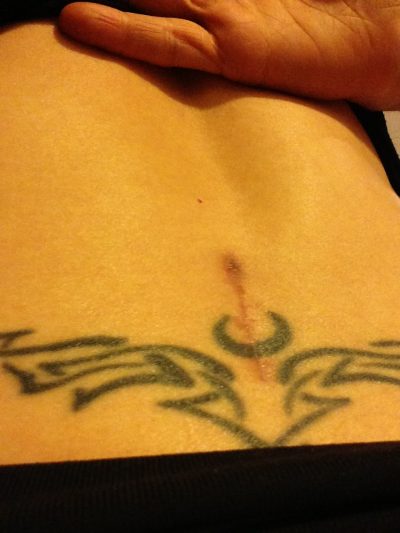
I’ve had lots of physiotherapy and coaching on how to correct my weightlifting form to accommodate for my spinal curve. I’m much stronger now than I’ve ever been, and get to wear my corsets for dressing up instead of as a medical device. While I do love my corsets, I cherish every night I sleep corset-free.” 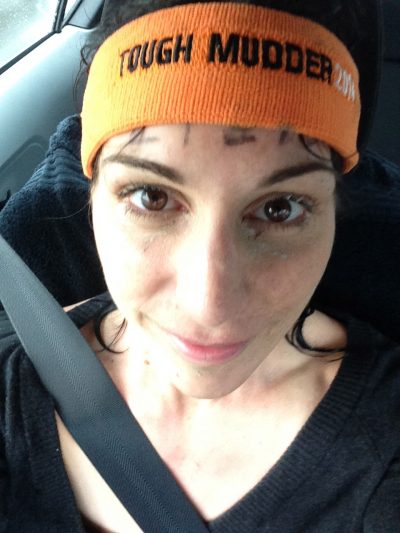 This was what I wrote for Lucy, explaining what I had been through personally, and hopefully it may help someone else too! The great part is that within a year of my surgery, I had completed three races, and have had no more pain! It’s important that I exercise regularly, stretch properly, and listen to my body to maintain my back health, and it’s still easy for me to pop on a corset when I notice my back is a little sore, or I need a posture reminder.
This was what I wrote for Lucy, explaining what I had been through personally, and hopefully it may help someone else too! The great part is that within a year of my surgery, I had completed three races, and have had no more pain! It’s important that I exercise regularly, stretch properly, and listen to my body to maintain my back health, and it’s still easy for me to pop on a corset when I notice my back is a little sore, or I need a posture reminder.
I can’t stress enough to consult your health care team to get to the bottom of what’s causing your back pain, but from my experience, and many others, corset can help (provided your heath care team are in agreement!)

